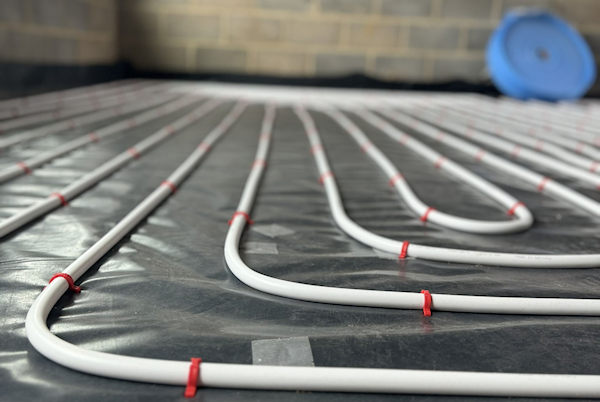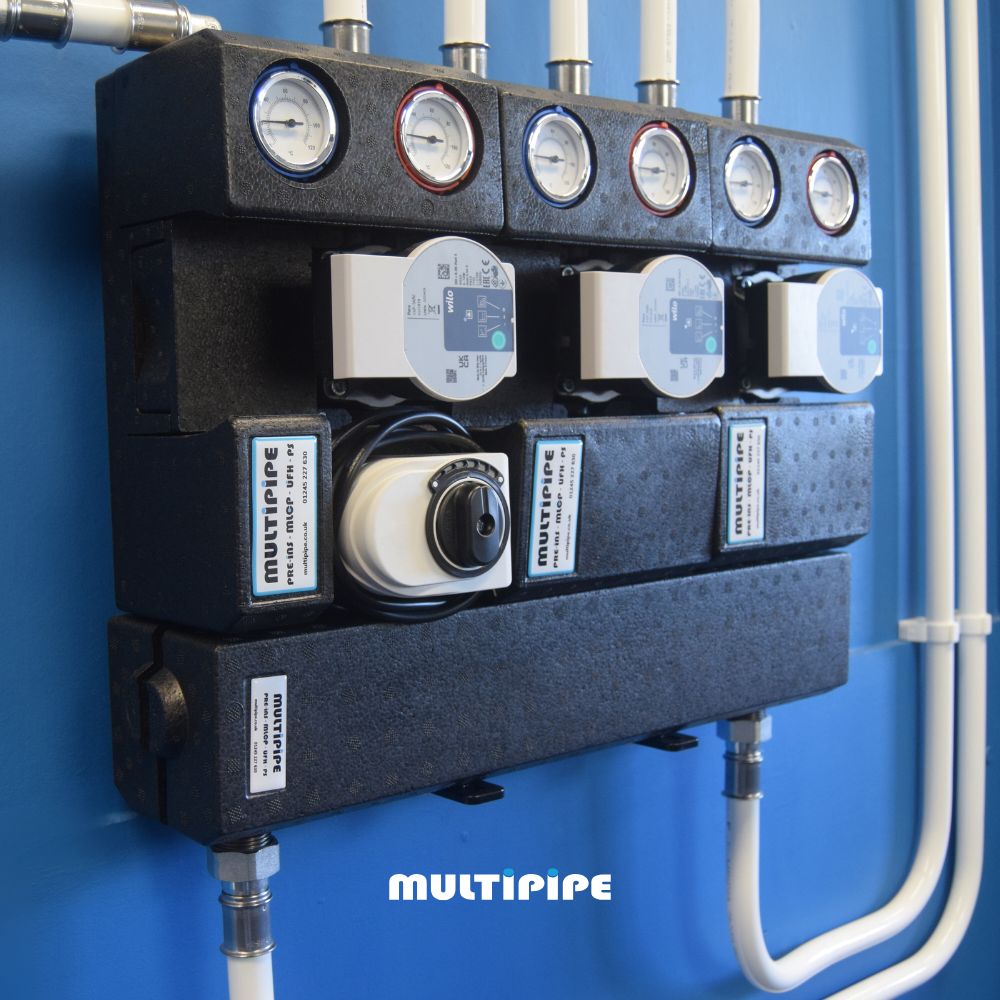
How Do You Advise on Running a New Underfloor Heating System to a Customer?
Over the years, Multipipe have had various calls from homeowners about issues with running a Underfloor Heating (UFH) system. And we’ve concluded that education of underfloor heating systems, is the biggest downfall in running an efficient UFH system.
Many end-users that have never previously owned an UFH system will run it like a radiator, whereby they have the heating on in the morning, off during the day and on again in the evening.
For a highly reactive system, this is fine. However, when you have a traditional screed underfloor heating system, this is known as a slow reaction system. So, why not look at how to run it differently?
The best way is to run your heating system continuously through the winter months, using the thermostats in the room to maintain the temperature. This might sound illogical and seem like you would use more energy, but this will actually use less energy than switching the system on and off!
This is down to how your boiler or heat pump works, (providing you have a modern modulating boiler). When you request heat, your heat source will start up and try and start heating all the system water and screed slab from cold.
On a radiator system, this will heat up quickly as there is no slab (thermal mass). It then relies on heating the air in the room, so this uses energy from the boiler in short bursts, but you never heat the fabric only the air. You will find the boiler will fire for 10 minutes or so, then shut down, then go again around 10 minutes later as the heat is dissipated into the room.
UFH systems work completely differently
However, an UFH system works completely differently. It must heat the screed floor first (this is a heat absorbent material) so it keeps taking the energy from the water, and it will do this for 1-2 hours.
Then the magic happens… now you have a heated floor and surrounding building fabric. This gently radiates heat to the room; the boiler slows down/stops heating but gently adds in heat occasionally to “top-up” the screed temperature.
But if you let the system cool and re-heat, this will use far more energy as it never reaches this thermal “sweet spot”. This is, even more, a case if you have a Heat Pump.
Heat Pumps and UFH
A heat pump works best when it has a gentle heat slope and somewhere to “store the energy”. Heating the screed from cold takes a tremendous amount of energy, and during deep winter, you can even reach a point where the Heat Pump will freeze (ASHP).
The unit will then pause and reverse to defrost itself and this will then steal heat from your lovely warming floor to defrost itself, undoing the work of heating the screed! Whereas if you run this continuously, it will charge up and use the screed floor like a battery and only need topping up when the temperature falls.
To run your boiler/ Heat Pump continuously and just use the air temperature thermostat (I know this does go against building regs) you will be looking at saving 8-10% of energy. Why do I know this? I converted my gas radiator system to a whole home UFH, and as well as an extension, I still saved energy by running continuously.
If you’ve any more questions about how to run your UFH system, our technical team are always here to help you out. Get in touch with us











